Disclosure: Please note that some links are affiliate links, and at no additional cost to you, we earn a commission if you make a purchase.
If you would like to support this website in some way, using these links will help do exactly that.
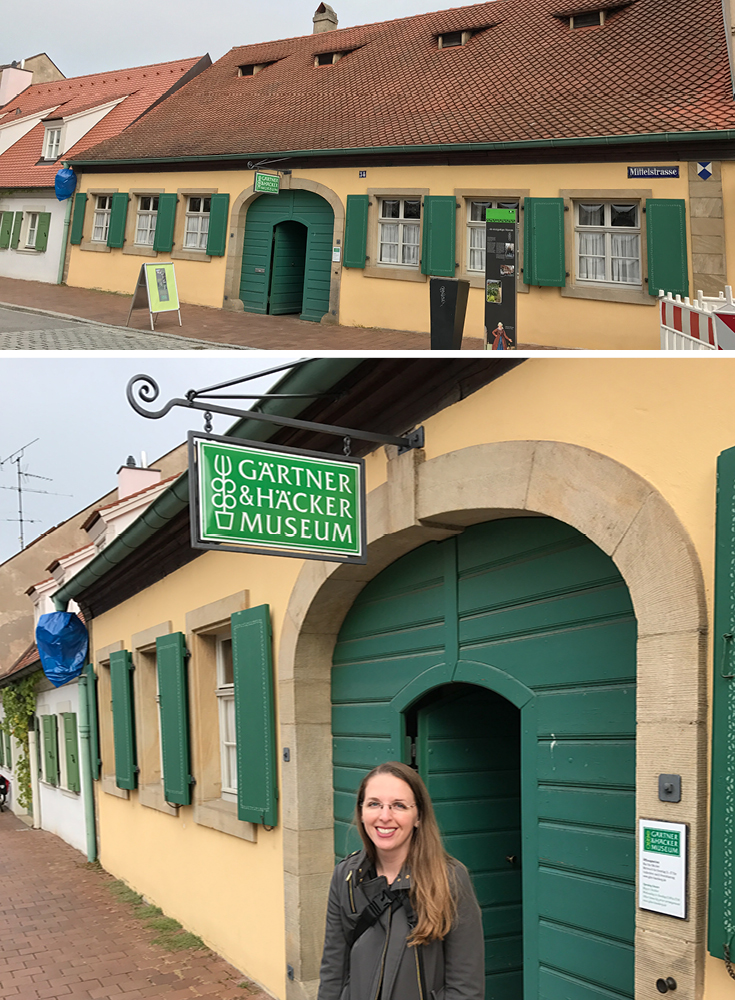
A large part of what makes Bamberg who it is as a city, and worthy of UNESCO world heritage as an entity, is it's unique gardening culture within the city limits. To understand why this is important, you have to see it. Visit Bamberg Market Gardeners’ and Vintners’ Museum and explore the surrounding gardening neighborhood with a guided map (sorry only in German Gardeners' District circular route (1,6 MB))
First off, I loved visiting the Gardeners’ and Vintners’ Museum in Bamberg. It was easily the most meaningful part of my trip to Bamberg. However, leading up to visiting, I was uncertain what I was really in for. The official website is completely in German, and the only other mention in English was abbreviated on other sites. If the website was only in German, would the museum only be in German? I was relieved to discover some English signage, and the available audio tour was completely available in English. So never fear! To help with the language barrier, I’ve typed up two of the English signs which I found at the museum that provide a great overview. Altogether, with my comments and photos, you'll agree that this museum is a must-see in Bamberg, Germany!
Listen to the Audio Guide, or Pass?
There are very, very few signs in the exhibits. You really need the audio guide to get the most out of your visit. The audio guide numbers hang from the ceiling and if it was a solid color and or had a wreath it was a main/general topic. Others were about specific items, like the kids toys. This way you still control your trip, rather than having the audio guide tell you where to go, which was nice.
How Long Will a Visit Take?
Estimate 1 hour if doing the audio guide.
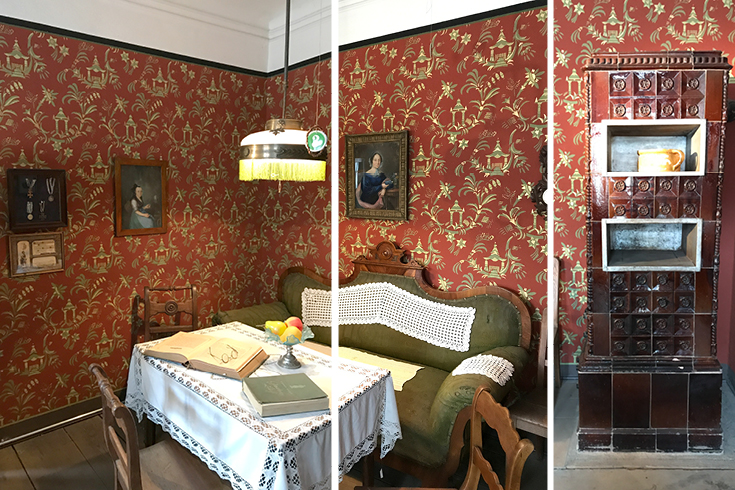
Taken from English Signage in the Museum
“Welcome to the Gardeners’ and Vintners’ Museum!
The museum offers an insight into the lives, culture and history of the city’s market gardeners and vintners. When Bamberg received World Heritage Site status in 1993, the unique cultural landscape of the market garden lands within the citiy was one of the reasons.
Based in a typical gardener’s house from 1767, this indoor and outdoor museum invites you to learn about the gardeners’ lives around 1900. The diversity of vegetable and herb varieties as well as tools and religious customs are also documented. The gardeners and vintners of Bamberg founded a museum society in 1975 and opened their museum in 1979. In 2012 the exhibition was completely redesigned.
Since the late Middle Ages, Bamberg’s gardeners have made use of the lands east of the Regnitz river. The mild climate was conducive to growing many varieties originating in Mediterranean areas. Bamberg’s gardeners became known throughout Europe and achieved commercial success through the trade in liquorice root (the raw material for medicinal remedies and liquorice confectionery) as well as in seeds for onions, caraway, leeks, swede, turnips and beets, kohlrabi, lettuce and spinach.
The vintners’ were known, like the gardeners, as farming townsmen (Häcker in local dialect, which derives from the hacking action associated with their work and their tools). In the 18th century the climate grew colder due to the Little Ice Age and production of Bamberg wine, which had come to be called belly-biter (Ranzenbeißer), was no longer viable. The producers switched to hops, fruit and grains.”
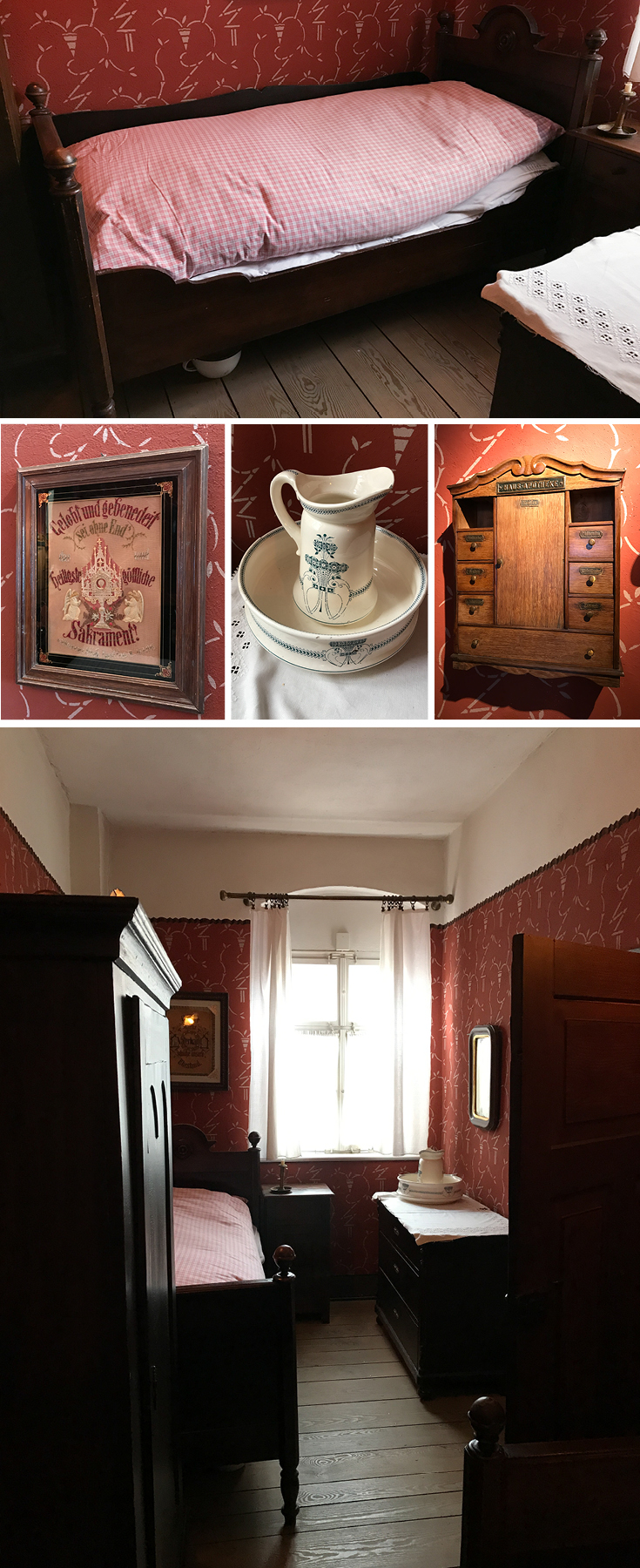
The Gardeners' Home
The home was styled for 1767 with a general parlor, kitchen, bedroom, kids’ room, grandparents’ room (which was an exhibit room and not styled as it was during the time). The through-way, or center foyer of the house was designed to allow a wagon to pass through to store food directly above the living quarters or to the garden out back.
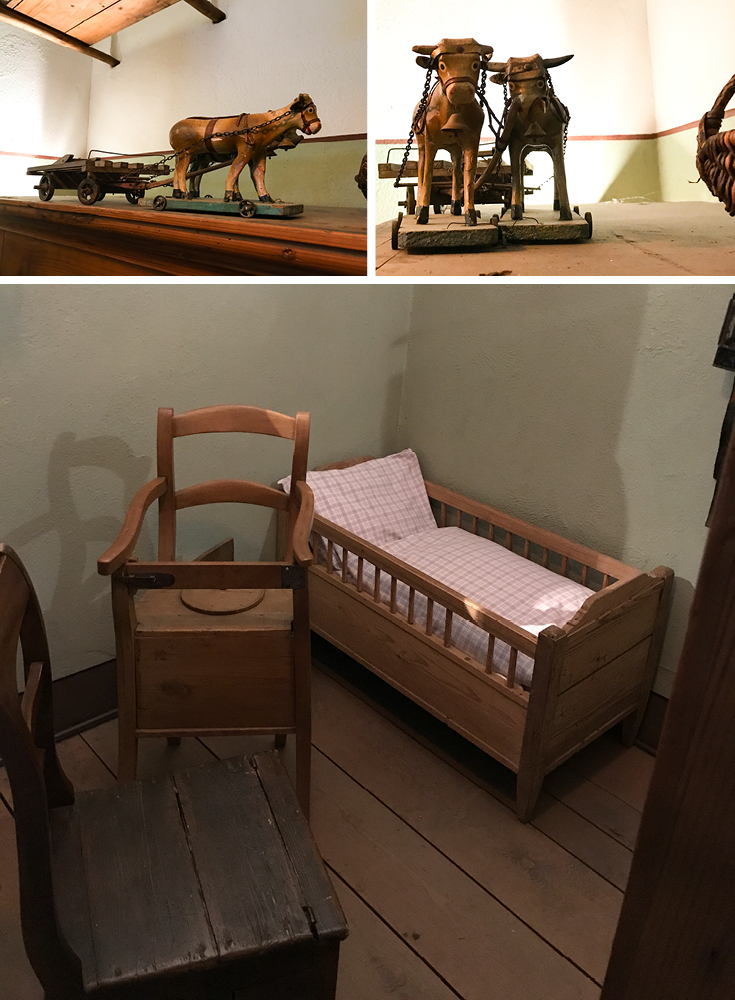
The Kitchen was Surprisingly My Favorite Room
I loved how they used open shelving to organize the kitchen. The stencil border, periwinkle blue, and stone tile combined for a charming kitchen. Attached directly to the wall are metal containers for flour and salt where you could directly scoop from while cooking.
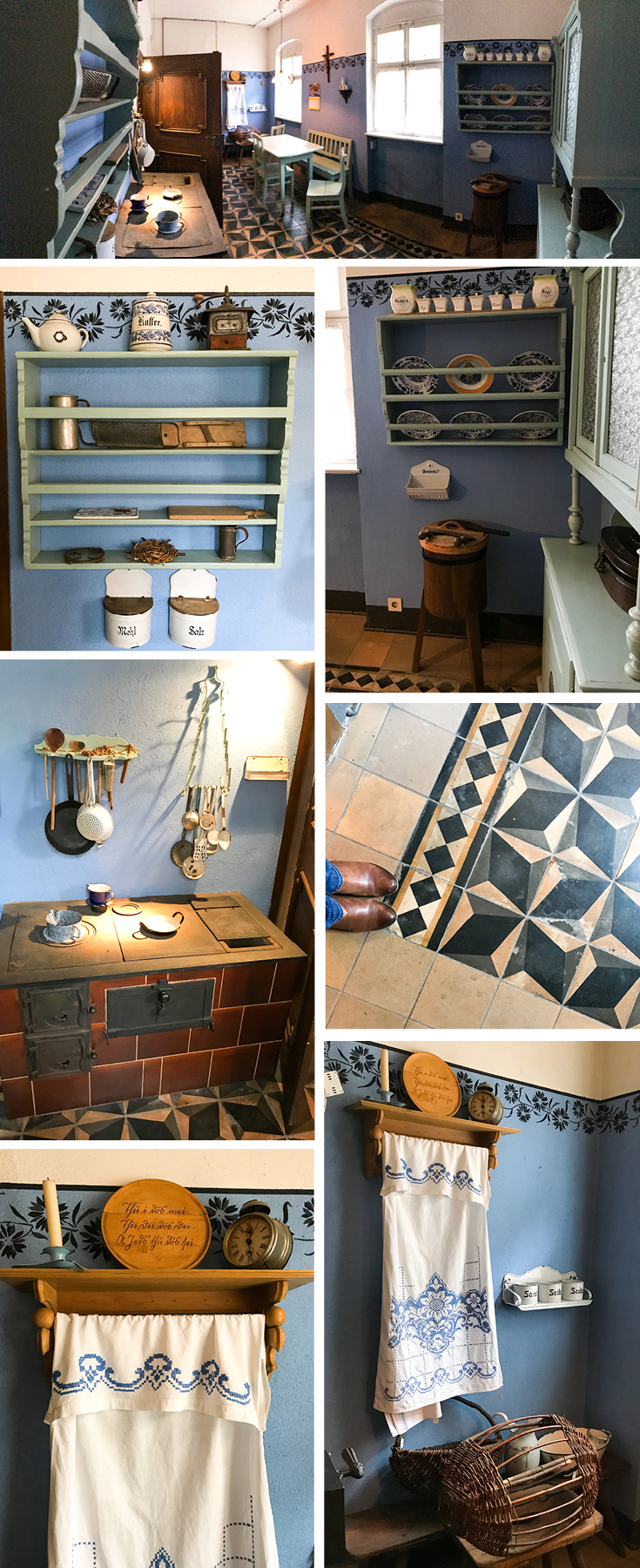
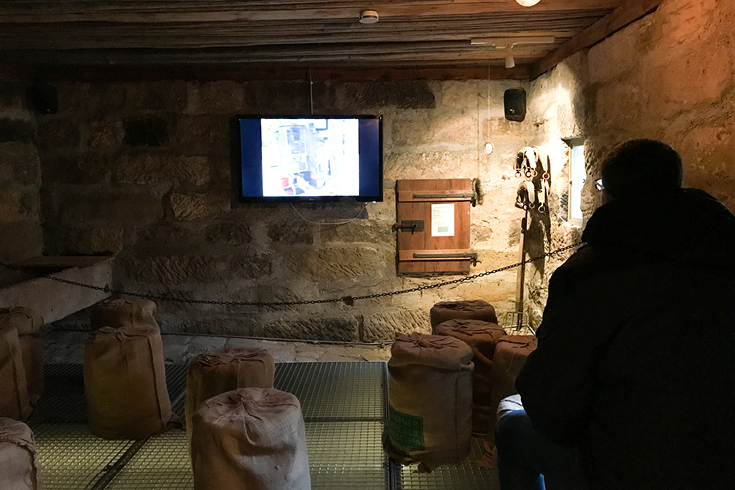
Hay Loft
In the loft above, there was an interactive video oriented display that explained the different farming and gardening tools. They also had period costumes of the time as well as a large historical photo showing the sellers, and the baskets they carried and sold from.
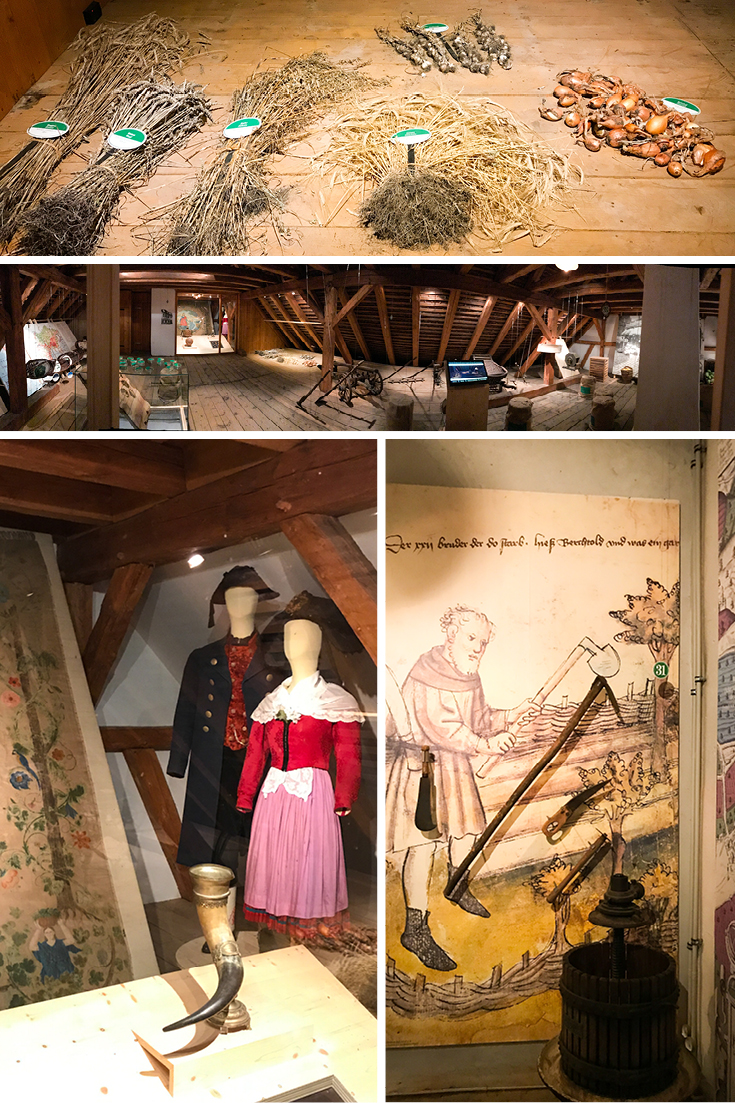
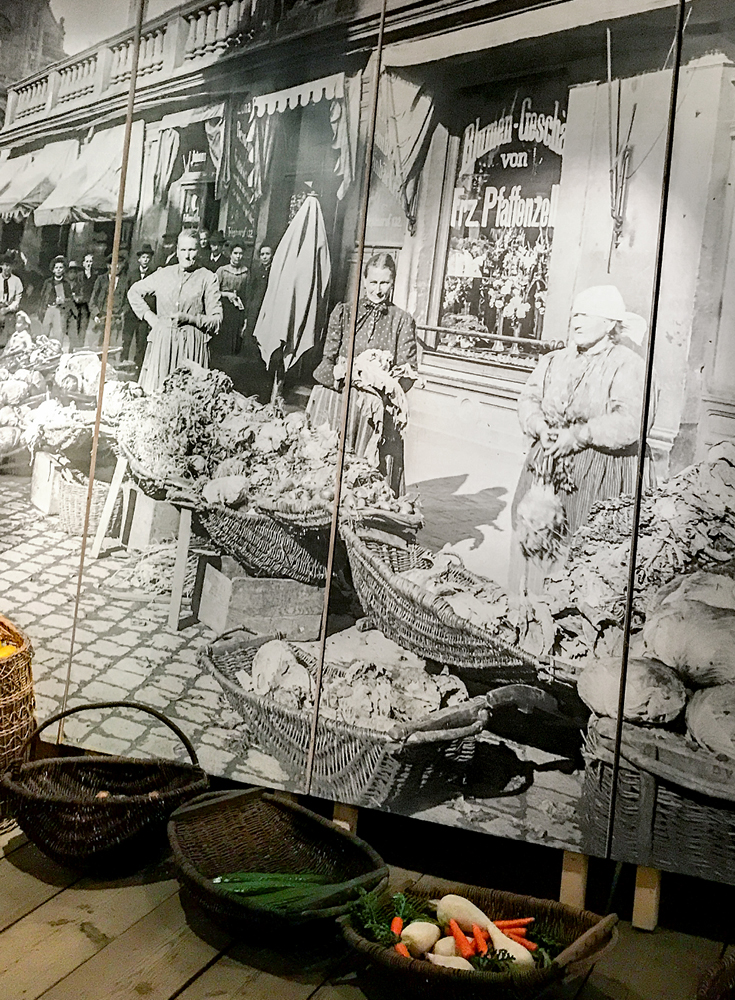
The Grandparents' Room
Here, the Museum showcases the Guild's processional staffs that were used in religious ceremonies and parades.
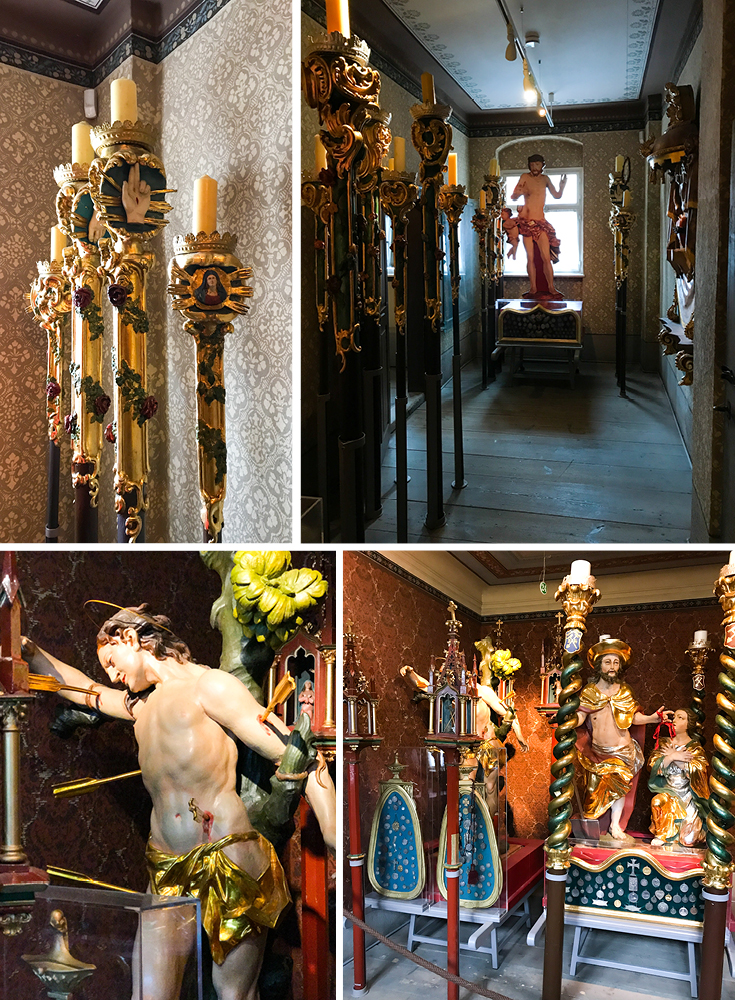

Bamberg Heritage Garden
The working garden out back had everything from flowers to vegetables. A church stood sentry in a distance making for a picturesque vista.
Taken from English Signage in the Garden:
“Bamberg Heritage Garden: Helping to conserve the “green heritage” of Bamberg’s gardeners
The Bamberg Heritage Garden was founded as part of the Urban Gardening Project run by the Bamberg World Heritage Office. In July 2013 a specially-founded voluntary association took over the running of the Bamberg Heritage Garden. The plants are cultivated following organic principles by volunteer workers from the association. The Bamberg Heritage Garden contributes to the conservation of the rare, local Bamberg vegetable varieties. It assists in the rediscovery of vegetables and varieties that are unique to Bamberg, some of which may already have died out or been forgotten. In the past, the seeds of local varieties, as well as knowledge about how to use them, have been lost. The Heritage Garden is intended to counteract such loss. In addition to preserving the ‘green heritage’ of the Bamberg gardeners, the garden is also a place where knowledge about growing and tending can be handed down-intangible heritage.
In the Heritage Garden multiple varieties of a plant are grown side by side, compared and explained. In this way, the Bamberg Heritage Garden helps maintain biodiversity, while also making history and environmental education come alive. Along with the well-known Bamberg local varieties of garlic, onion, radish, pointed savoy cabbage and the ‘Hörnla’ potato, numerous heirloom varieties of bush and climbing beans from the Bamberg region are being grown, which in former times were of great importance in local cuisine. In the course of the project seeds have also been discovered of lone local variety previously believed to have been lost- the Bamberg pear-shaped onion. This onion variety has been cultivated in the Heritage Garden since it's rediscovery, with the aim of propagating the seeds and preserving the variety for future generations.”
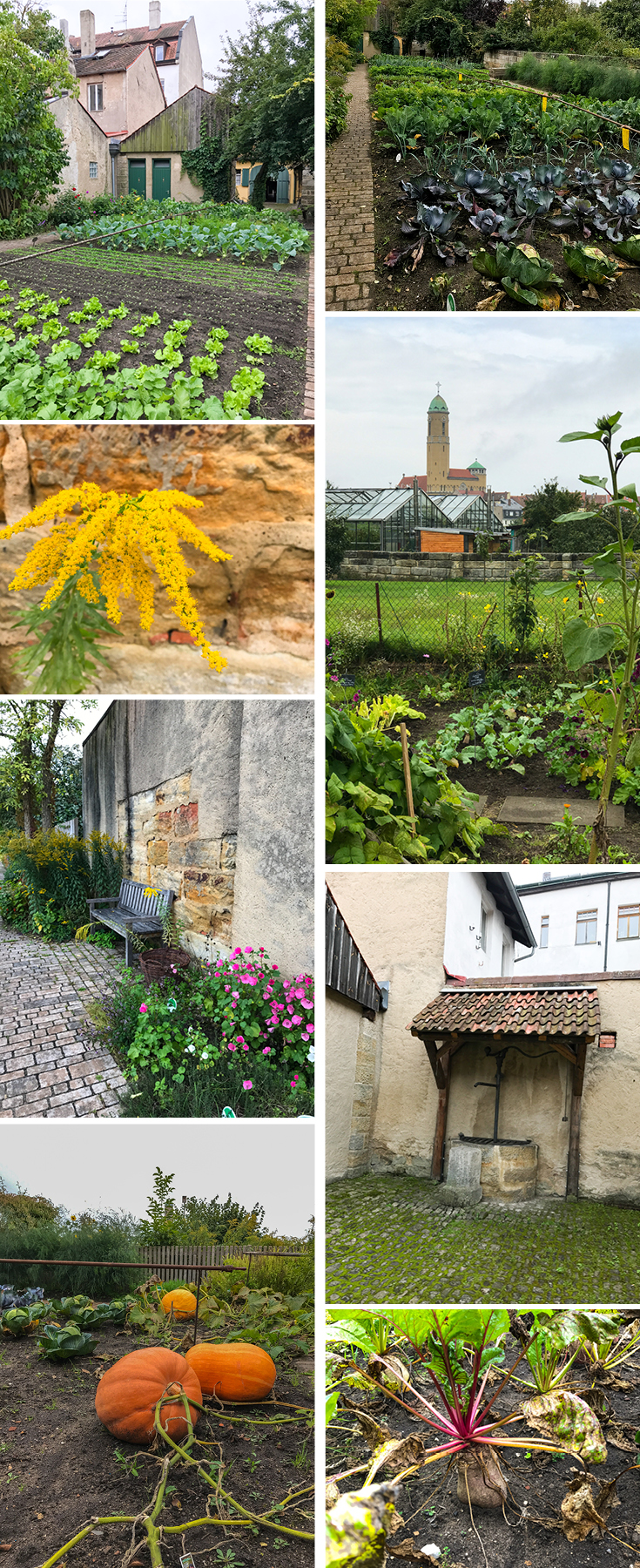
Follow Along
If you enjoyed this article, or these topics sound interesting to you, you'll love our weekly newsletter. You'll receive the newest posts each week and exclusive access to free planning resources like ‘Packing List & Tips for 2 Weeks in Germany’ and ‘Everything You Need to Rent a Car in Germany’.
Thank you for reading!

Our Germany Bucket List has a variety of sources. Some are from German history books that mention a particular city again and again, others because they have a specific castle that has captured my attention, perhaps they have a polar bear residing in the zoo, or I develop a longing to go somewhere from Pinterest. When we are in the early trip planning phase, often I refer back to pins I’ve saved from other travel bloggers. We're so excited that in the next two weeks, we’re visiting our top 4 on our bucket list, Kassel, Bamberg, Leipzig, and Weimar.
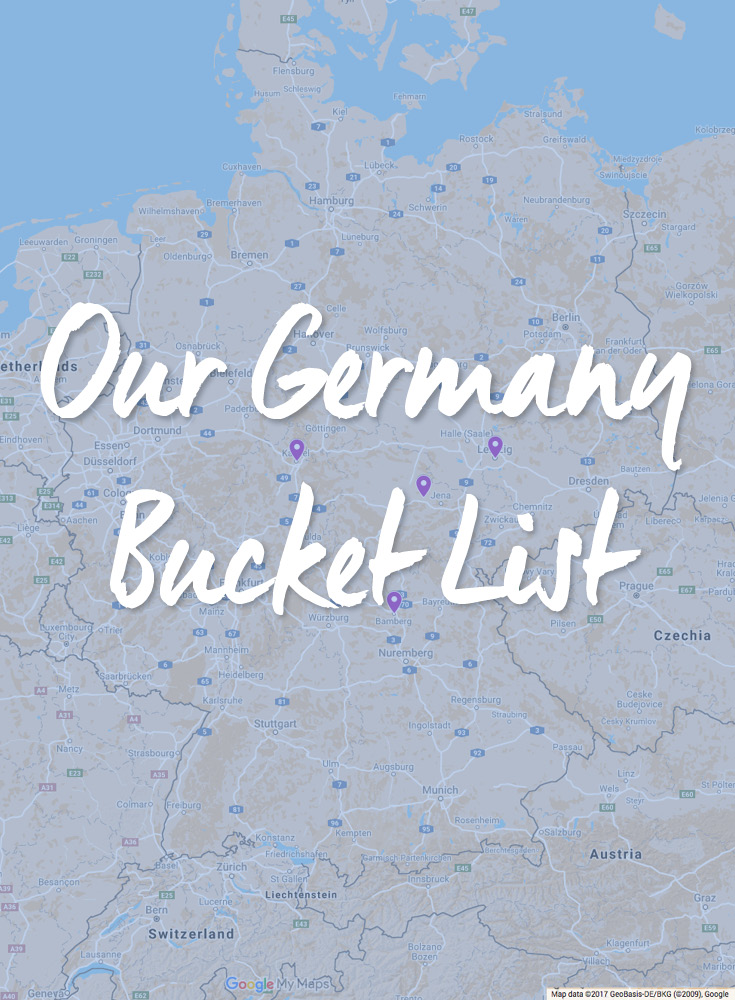
Kassel, a city in the central German state of Hesse
It has a castle that popped up on my radar when I read “Why You Should Visit Wilhelmshöhe Park in Kassel, Germany,” by Tamara for her blog Globe Guide. Her photos captured my imagination and Kassel was swiftly on my list. The grand opening of the Grimm World museum a few weeks ago and plans were put in motion! We’re planning on doing a family day trip with Sebastian’s parents and his sister, since it's only a two hour drive from their home near Frankfurt am Main. Finally, we’re going to Kassel!
Bamberg, a town in southeastern German state of Bavaria
Lorelei of California Globetrotter using the word ‘Bumbling’ in her title “Bumbling Around in Bamberg”, grabbed my attention. I’m a sucker for innovative verb usage! Wow, what a half-timbered beauty, and I can’t wait to take my own photos of the Old Town Hall built atop the Regnitz River. I’m also fascinated by the Market Gardeners’ District that feature active vegetable fields run by two dozen families that is an ongoing example of an early medieval town, and significantly helped Bamberg achieve Unesco World Heritage status.
Leipzig is a city in the eastern German state of Saxony
I first heard about Leipzig in regards to their zoo, that it was exemplary. I did some digging around on Pinterest and found Adelina’s article on her blog Pack Me To, “A Day in Leipzig: History, Bach, and Cake,” and decided to keep digging. It looked like a city that could our entire family entertained for more than a few days. Beyond the Leipzig Zoo, we’re planning on visiting the Museum of Fine Arts (Museum der bilden Künste), Time Historical Forum (Zeitgeschichtliches Forum, charts the history of GDR from division through reunification), and visiting the German National Library. Add in a plethora of historically important cafes, churches, and town squares and we’re going to have an epic trip!
Weimar, a city in the east central German state of Thuringia
This city just won’t be ignored. It's mentioned as consistently as Berlin in my history books. Goethe lived there. Schiller lived there. Nitzche lived there. Weimar is not a day trip city, it's responsible for such a wealth of German culture that you should plan several days to really ‘get it’. I loved the overview and photography that Russell of Roaming Required shared in “Discover Germany’s Cultural Heartland-Weimar”. If you’re fascinated by German history and culture, you’ll want to put Weimar on your list too.
Our bags are packed! Multiple color copies of our itineraries are printed and in page protectors. Yes, page protectors! That’s how we roll. We’re so excited for our annual September trip to Germany! As a result, our blog is on vacation for two weeks, and we look forward to returning the first week of October refreshed and refueled with adventures in Germany. Do you have any suggestions for us before we visit Kassel, Bamberg, Leipzig, and Weimar? What cities in Germany are on your bucket list and why? Let us know in the comments below or send us an email.
Follow Along
If you enjoyed this article, or these topics sound interesting to you, you'll love our weekly newsletter. You'll receive the newest posts each week and exclusive access to free planning resources like ‘Packing List & Tips for 2 Weeks in Germany’ and ‘Everything You Need to Rent a Car in Germany’.
Thank you for reading!

